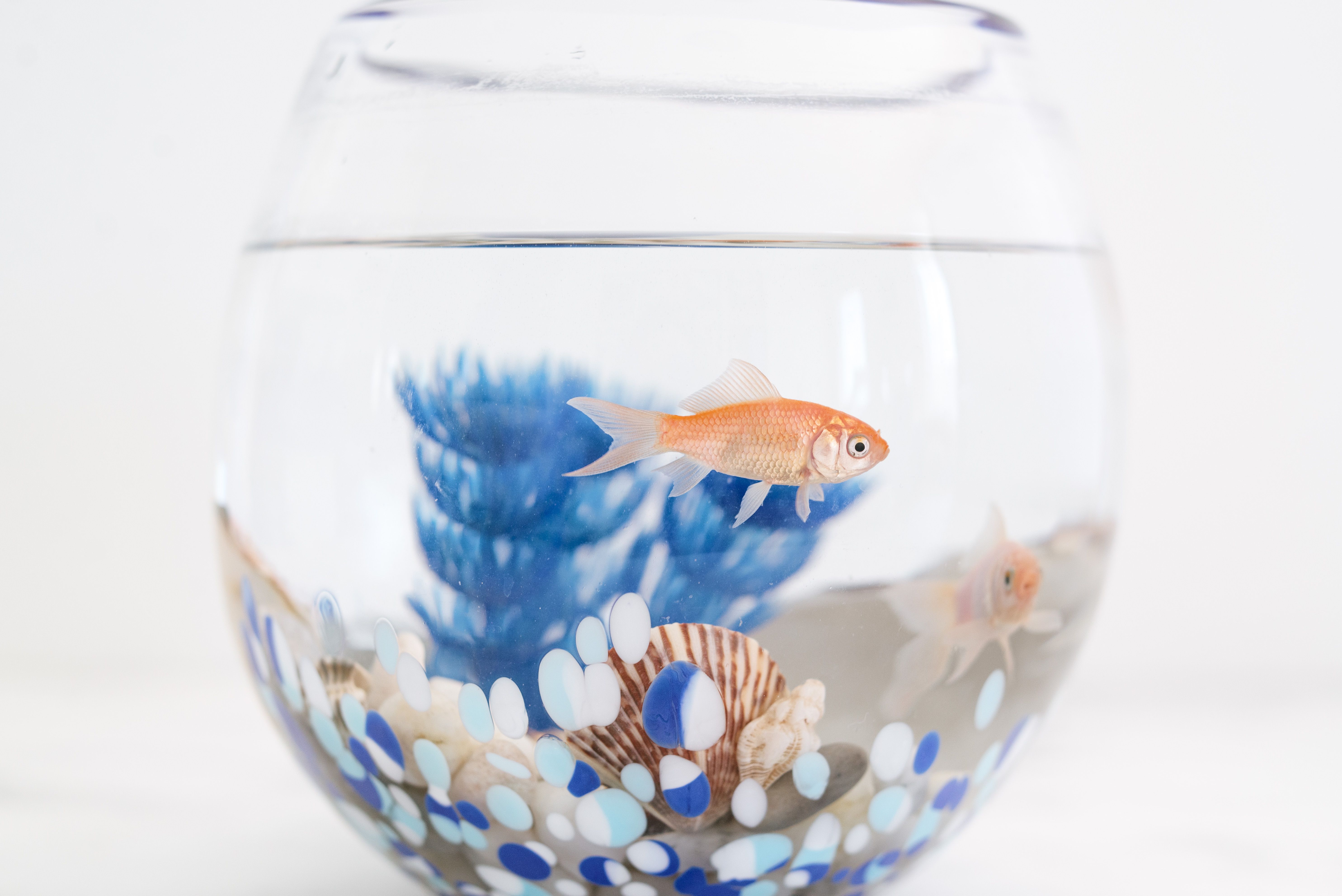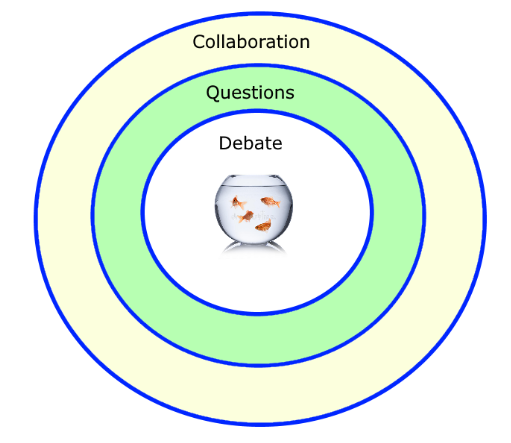The User Experience Fishbowl model is applied in situations where it is necessary to discuss a challenge as a team (a problem, a complex functionality, a group strategy, etc.)
When faced with doubts about functionality, or the way the user uses a tool. To seek continuous improvement, where team members present a case, and the team in full helps to find ways to improve. In refinements to explore new functionalities, or lower the detail of a functionality. In a Sprint Retrospective to look for aspects of improvement

A discussion space in which the necessary tranquility can be guaranteed for the execution of this activity. A meeting room or a videoconference session.
For a non-face-to-face activity: A board with different areas where participants contribute content as the activity progresses

For in-person sessions, a meeting room can be adapted with chairs arranged concentrically, so that the people who will initiate the debate can sit in the inner part. And behind them the rest of the session participants are placed. In the outermost area, for example on the walls of the room) the murals or boards are arranged that will serve the session participants to make their final contributions.

The entire team participates, including people who can explain the functionality in question, the problems or challenges. And also those people who can help solve the problems, or give ideas, or build a solution (UX, users, other teams, management, technology teams, etc.).
One team member should play the role of “activity moderator”. Presenting the phases and controlling the time. All participants have access to the activity board and murals on equal terms. Everyone is free to edit the board, incorporate information and complete the contributions of others.
1 hora
This activity is structured according to the execution of 4 collaborative phases:
Each of these phases is subject to an execution time that will be controlled by the moderator
The activity moderator presents the objectives of the activity and the operating rules. He introduces the members who will participate in the activity and describes the question or challenge to be solved.
The moderator asks for the participation of 3 to 7 volunteers in this phase, who will have the opportunity to debate among themselves about the challenge posed. For virtual sessions, volunteers place a post-it with their name in the inner circle of the board. For in-person sessions, volunteers sit in the chairs arranged in the inner circle of the room.
The volunteers start a debate that has a duration previously agreed with the moderator (generally 10 to 15 minutes). The rest of the participants remain silent and take notes. They do not intervene.
The volunteers speak openly and without any impediment. They speak as if they were alone in the room. They focus on explaining their experience with the challenge (a feature, a user experience, etc.) and how they solved the problems or what obstacles they encountered
Once the debate time in the previous phase has expired, another short period of time opens, where the rest of the participants ask questions about what has been discussed. The questions can be anonymous and are passed through the moderator. The questions must be aimed at resolving doubts, and not at making direct proposals for solutions.
Once the time for asking questions has expired, a longer period of time opens where the moderator verbalizes these questions to the inner circle, establishing a flow of communication where now both the members of the inner circle and all the participants can debate around the question asked. The moderator must ensure that all participants have the same opportunities to participate
Once the time in the previous phase has expired, a final period of time opens where all participants can present ideas, proposed solutions or conclusions around the topic discussed in the session. Participants write their proposals, conclusions or reflections on a mural set up at one end of the room, or in the outermost circle of the panel proposed for virtual sessions
Estructuras liberadoras “User Experience Fishbowl. Comparte el conocimiento obtenido desde la experiencia con una comunidad más grande” - Web (https://estructurasliberadoras.com/menu-ls/user-experience-fishbowl/)